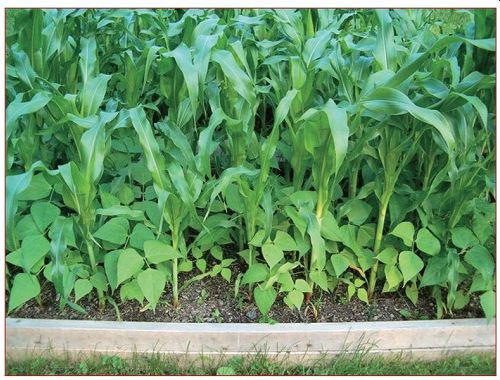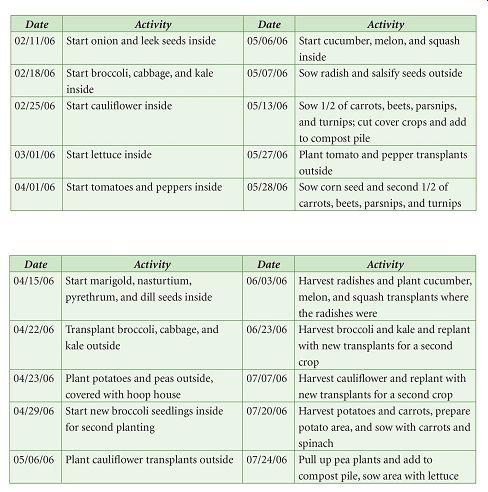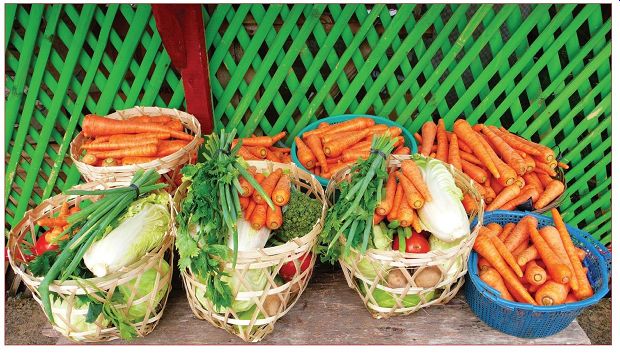Most of the United States, even the northern plains, has a growing season long enough to allow for multiple plantings of many crops.
Moreover, well-orchestrated timing allows harvests to be timed either to allow a little at a time to be harvested for daily use or marketing-which is useful for crops like lettuce-or to allow multiple large harvests for the purpose of preservation and storage.
Many crops are frost hardy, and second plantings will allow harvests to continue for as long as a month after the first fall frost, without using anything to extend the season. For example, two crops of broccoli or spinach can be raised in the same area as one crop, doubling production per unit area.
Succession Planting
This is a technique for maximizing productivity of garden space by having a new crop ready to plant as soon as an earlier crop is harvested. An example is planting a second crop of broccoli in the same space where a first crop of broccoli was harvested at midsummer . Another example is sowing spinach early and then planting beans where the spinach used to be as soon as the spinach is harvested.
Crops that work well for the early planting in a succession are anything from the cabbage family, spinach, peas, radishes, turnips, beets, and onions from sets. ("Sets" are the miniature onions for planting that you can buy in a mesh bag at the garden center . They aren't the same as supermarket onions.) The foregoing crops are usually harvested no later than the middle of July. Crops that can be planted in mid-July for a late summer or fall harvest include bush beans, lettuce, spinach, carrots, turnips, beets, parsnips, and anything in the cabbage family.
Timed Planting
Timed planting means spreading out harvests by staggering the planting dates for a particular crop across a few weeks rather than planting it all at once. The result is a steady supply of a particular crop for market or a continual harvest that can be frozen, eaten, or canned in small sessions.
The easiest way to do this is to take the total number of plants intended for a given crop and divide it by three. Sow the first third on the first sowing date for that crop, the second third a week later , and the final third two weeks later . This will give the same total harvest as planting the whole crop at once but will spread out the harvest over a two-week period.
The next aspect of timed planting is replanting. Take carrots, for example; if carrots were planted in four sessions, each two weeks apart, when the first planting is harvested, that area can be replanted with more carrots so the space never sits idle. By the time the final crop of carrots is ready for harvest, you are only two weeks away from yet another first harvest.
Succession planting and timed planting both provide a little insurance so if serious weather hits early or late, there's still a harvest. All that you need to know to successfully use succession and/ or timed planting is the days to maturity for the crop under consideration and its frost hardiness.
Interplanting
Interplanting is used in two ways. It is used to give green manures a head start on the winter and to maximize the amount of food that can be harvested from a given area. Carefully chosen, interplanted crops can save on fertilizer as well, as when a nitrogen producer such as beans or clover is interplanted with a nitrogen consumer such as tomatoes or corn.
There are some practical considerations to interplanting, and chief among them are overcrowding and shade. Plants that require a lot of space or sunlight, such as tomatoes, could have difficulty if planted in an established stand of corn. If planted before the corn has germinated, the tomatoes would shade the seedlings. On the other hand, white clover works well with most plants, as do beans.

------------- Interplanting crops creates synergies.
Perhaps the most famous example of successful interplanting is the so-called Three Sisters of the Native Americans-corn, beans, and squash, which they grew together. In this case, the pole beans and squash vines used the corn stalks for support.
Fall Gardening
Frost hardy crops and biennials kept alive over the winter for seed production (called "overwintering") can be planted first in the spring, harvested in the summer, and then replanted for a second fall or early winter harvest. Late harvests can be achieved for many crops without going to the trouble of using season extension structures. Overwintering crops, so they can be used either as needed or for seed production, is more problematic. In the South or Pacific Northwest, it can be done outdoors. In the upper Midwest or Northeast, such plants have to be brought indoors for the winter or else protected with, at minimum, an unheated greenhouse or cold frame.
For purposes of fall gardening, crops can be divided into three categories: tender , semihardy, and hardy. Tender crops are damaged by a light frost. Semihardy crops will tolerate a light frost, and hardy crops will tolerate hard frosts.
The best bets for fall gardening are semihardy and hardy crops.
Some hardy crops, like broccoli and spinach, often taste better when grown in the fall rather than in the spring. Semihardy crops should be timed for harvests within 28 days after the first frost, and hardy crops should be timed within 56 days after the first frost. For this, the time to harvest needs to be known. Each variety of a given crop has slightly different dates of maturity, and those dates are indicated in seed catalogs and on seed packets. Because growth is slower in the fall, 10 days should be added to the maturity date, so plant 10 days earlier for fall harvests.
Table 7: Crop Hardiness
Tender Semihardy Hardy
Beans Beets Broccoli
Corn
Carrot
Brussels sprouts
Cucumber
Cauliflower Cabbage Eggplant Celery Kale Melon Chard Onion Okra Lettuce Parsley Pepper Parsnip Peas Squash Potato Spinach Sweet potato Turnip Tomato
Using Seedlings for a Head Start
Some crops, such as cucumbers, can be directly seeded in the garden or transplanted. Transplanting seedlings gives the plants a head start and can allow maximum production from the number of growing days in the season.
Winter squash, requiring 80 or more days to harvest, is a good candidate for transplanting seedlings, particularly in the northern half of the United States where there are often fewer than 90 frost free days in a row in the growing season. Since squash shouldn't be direct seeded until 14 days after the last frost, leaving fewer than 80 remaining growing days, growing transplants instead will increase the amount of squash harvested without requiring the farmer to use season extension devices.
The same applies for crops in the fall garden. In the late season, broccoli can be direct seeded, but giving it a four-week head start by growing seedlings inside and then transplanting them will accelerate the harvest.
One place where I have used this technique to good effect is with a crop that most authors will tell you not to transplant: corn. Grown on the agribusiness scale, seed for sweet corn is usually coated with a fungicide to keep it from rotting in the ground. Seed corn is prone not just to rot but to being eaten by wire worms. In addition, it doesn't all germinate at the same time. On a very large scale, this all evens out. But on a small scale--say growing 48 plants in a 4-foot × 8-foot raised bed--it can be a problem. Transplanting seedlings is an ideal solution.
What we do is start 64 seedlings indoors about two weeks before the first frost-free date. It's important to not try any longer than two weeks because corn grows a taproot, and after that, transplant shock can be too great. After two weeks, some may not have germinated, and some will be taller than others. What we do is pick the 48 most uniform plants and transplant them into the bed. We keep the others handy for a week just in case cut worms or some similar pest strikes.
You can use this technique for most crops outside of root crops.
By starting from seed indoors, you gain an advantage of anywhere from two to six weeks.
Example Timeline
The following table is part of the calendar for my own mini-farm in New Hampshire, so the exact dates may not work for you.
Nevertheless, the examples given should be helpful.

------ Table 8: Example Activity Schedule

-------
----